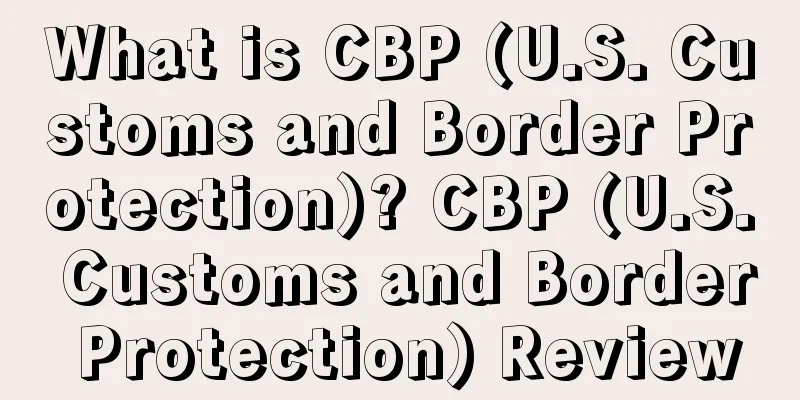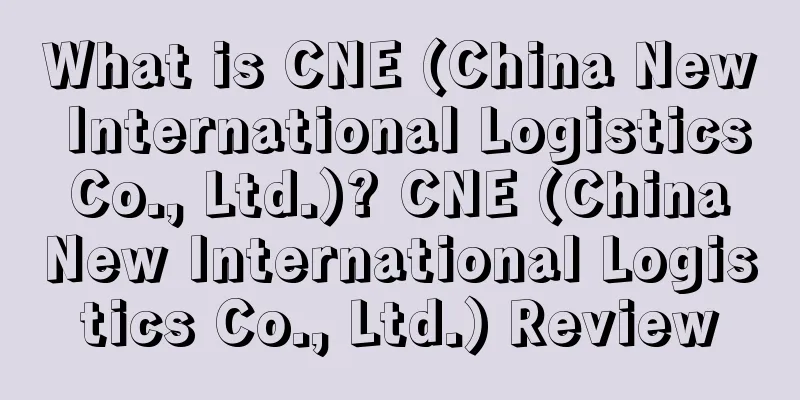What is CBP (U.S. Customs and Border Protection)? CBP (U.S. Customs and Border Protection) Review

|
CBP (U.S. Customs and Border Protection) is a federal law enforcement agency of the U.S. Department of Homeland Security, headquartered in Washington, D.C. The agency is responsible for collecting tariffs and enforcing U.S. trade, customs, and immigration laws . 1. Purpose of Establishment The establishment of CBP marks the first time in U.S. history that a single agency has unified the management of people and goods entering U.S. ports. The establishment of CBP aims to integrate the management resources and management skills of port law enforcement agencies, improve management effectiveness and efficiency, and achieve the goal of facilitating legal trade and legal travel while using all available resources to protect and defend the United States from infringement.
II. Main Responsibilities As the largest law enforcement agency in the United States and the main investigative agency under the Department of Homeland Security, Customs and Border Protection has the following responsibilities: cutting off terrorist financing, combating money laundering, combating illegal arms sales, combating immigration fraud and human trafficking, detaining and deporting foreign criminals and other foreigners who the United States believes should be deported, curbing the flow of drugs and other contraband, protecting U.S. economic interests from loss, and protecting U.S. companies' intellectual property from theft. In addition to fulfilling its core missions of protecting border security, promoting legal trade and tourism, CBP also shoulders social responsibilities, such as environmental management, including assessing potential environmental impacts, protecting cultural resources and historical sites, etc.
3. Organizational Structure The main agencies under CBP include: the Field Operations Division, which has 20 field operations departments, 331 entry ports, and 15 pre-inspection stations in Canada and the Caribbean. Its main tasks are to protect border security, inspect passengers, manage trade risks, enforce the law, detain and punish goods and personnel, etc.
IV. Strategy As the nation's single border agency, CBP has a vital responsibility to protect the United States and its citizens. CBP's strategy to enhance security and facilitate lawful trade and travel is to: Improve the risk target screening system and promote advance access to information on people and goods arriving in the United States; establish partnerships with governments of other countries (regions) and businesses to promote the "outward expansion of the security zone"; use pre-inspection technology and deploy relevant equipment; increase border security supervision manpower; work with other agencies to combat trade fraud, intellectual property infringement, money laundering and other activities, and coordinate the controlled delivery of illegal drugs. The U.S. Immigration and Customs Enforcement (ICE), with about 30,000 staff members, is one of the largest investigative agencies in the federal government. The agency is the main investigative agency under the Department of Homeland Security and is given a number of responsibilities: cutting off terrorist financing, combating money laundering, combating illegal arms sales, combating immigration fraud and human trafficking, detaining and deporting foreign criminals and other foreigners that the United States believes should be deported. In addition, the agency also oversees the implementation of domestic immigration and customs laws and protects about 9,000 federal facilities.
V. Law Enforcement Authority CBP has the authority to search vehicles transported in and out of the country. Section 596 of the Tariff Act requires CBP to seize and impose penalties on all goods that are stolen, smuggled, or illegally imported. CBP also seizes and imposes penalties on controlled chemicals, certain contraband, and plastic explosives that do not contain detectable agents. In collaboration with the State Department and the Census Bureau, the Export Electronic Information System's deadline information is used to identify goods that may pose a threat. CBP has the power to impose civil penalties, the legal basis of which is Section 592 of the Tariff Act of 1930. This section provides for penalties for persons who import, attempt to import, or assist or falsify or defraud to obtain documents or reports, and classifies the penalties (mainly three types: fraud, gross negligence, and negligence). CBP also has the power to impose criminal penalties, and those who provide false information to customs officials may be sentenced to up to two years in prison, a fine of $5,000, or both for violating import regulations. References |
>>: What is EZPAYS? EZPAYS Review
Recommend
Amazon is in big trouble? It may face a fine of 270 million
Yesterday we talked about a seller in a US store ...
I used the official review request function, and got 5 one-star negative reviews overnight.
On November 12, the “Request a Review” function s...
Big news! The "mask mandatory order" in Europe and the United States has taken effect, and the mask peak is coming!
Recently, the global COVID-19 epidemic has continu...
What is Grandecha Global? Grandecha Global Review
Grandcheck Global is a leading global enterprise i...
15 Ways to Catch Copycats and Change Commissions on Amazon
The commission change is currently applicable to ...
After working on more than 1,000 best-selling cases, I discovered the three most profitable secrets of Amazon product selection
The full text has 1454 words and takes 6 minutes ...
The number of Etsy sellers has increased to 5.3 million! A total of $12.2 billion worth of goods were sold in 2021!
<span data-shimo-docs="[[20,"获悉,据外媒报道,4月1日...
What is the Early Incubation Program? Early Incubation Program Review
Starting from the second year after the store is o...
To regain market share, US home furnishing e-commerce company Overstock announces major adjustments
According to the latest foreign media reports, Ove...
What is Tito Cross-border? Tito Cross-border Review
Shenzhen Tito Technology Co., Ltd., as a promoter ...
What is Amazon family? Amazon family review
The Amazon Family Plan on the US Amazon website is...
FBA pilot new function! Ranking traffic is not affected by out-of-stock
How much impact does out-of-stock have on product...
Musk slapped himself again! He stopped the much-publicized $8 blue check verification fee plan!
It is learned that the previously planned $8-a-mon...
Walmart Mexico announces Q3 results, net profit down 5% due to increased costs
It is learned that on October 23, Walmart Mexico a...
Pinduoduo's low-price copycat? Amazon sellers using Temu to arbitrage were banned
Following the previous announcement of a layoff of...









